India – The term “pious” carries a rich tapestry of meanings and connotations, deeply embedded within religious, moral, and cultural contexts. At its core, being pious typically refers to a devoted or dutiful spirit towards religion or divine worship. This devotion isn’t merely a superficial adherence to rituals or traditions; it’s a profound expression of faith, a heartfelt commitment that shapes one’s actions, thoughts, and interactions with others.
Pious individuals often strive to live by their spiritual beliefs, embodying the virtues and morals that their faith upholds. This can manifest in acts of charity, kindness, and a general disposition of goodwill towards others, seen as an extension of their devotion to a higher power.
However, piety extends beyond the confines of religious observance. It can also denote a general respect or dutifulness towards one’s parents, elders, or the community. This broader interpretation of piety reflects a universal principle shared across many cultures and societies: the importance of honoring and respecting those who have provided us with guidance, wisdom, and care. In this sense, piety transcends religious boundaries, embodying a universal value of reverence and gratitude.
Despite its inherently positive implications, the concept of piety is not without its complexities and criticisms. Some argue that piety, when taken to extremes, can become rigid, dogmatic, or even hypocritical, leading individuals to prioritize appearances of devotion over genuine acts of kindness and compassion. Moreover, interpretations of what constitutes pious behavior can vary greatly among different cultures and religious traditions, sometimes leading to misunderstandings or conflict. Nevertheless, at its heart, piety remains a powerful force for good, inspiring individuals to lead lives of purpose, integrity, and service to others.
Varanasi, Uttar Pradesh:-India
Varanasi, also known as Kashi or Banaras, is one of the holiest cities in India and is considered the spiritual capital of Hinduism. It is located on the banks of the Ganges River and is home to numerous temples, including the iconic Kashi Vishwanath Temple dedicated to Lord Shiva.
Varanasi, a city in Uttar Pradesh, India, is a vibrant and historic city that holds immense cultural and religious significance. Nestled on the banks of the holy river Ganges, Varanasi is one of the oldest inhabited cities in the world. It is believed to have been founded by Lord Shiva. Its ancient temples, ghats, and narrow roads tell the story of its rich history and heritage.
Varanasi is a major pilgrimage center for Hindus, and millions of devotees visit the city every year to bathe in the Ganges and seek blessings at the Kashi Vishwanath Temple, one of the most sacred Hindu temples in India. The city is also known for its vibrant culture, classical music, and traditional arts and crafts.
Unveiling the Essence of Varanasi: A Tapestry of Facts
Varanasi, a city steeped in history and spirituality, boasts a wealth of fascinating facts that contribute to its unique identity. Here are some key facts that shed light on the essence of this ancient city:
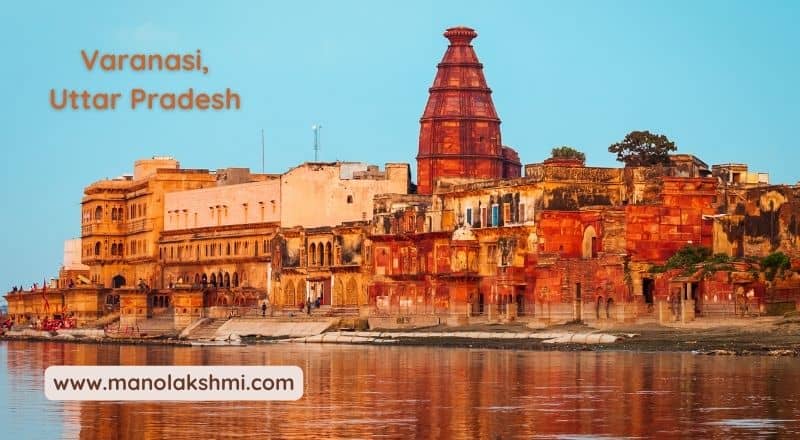
Sacred River:
Varanasi is situated on the banks of the holy river Ganges, considered the most sacred river in Hinduism. Millions of pilgrims flock to Varanasi to take a dip in the Ganges, seeking spiritual purification and salvation.
Ancient Heritage:
Varanasi is one of the oldest continuously inhabited cities in the world, with a history dating back over 5,000 years. Its rich cultural has been shaped by various civilizations and empires, leaving behind a treasure trove of architectural wonders, including ancient temples, ghats, and palaces.
Religious Significance:
Varanasi is a melting pot of religions, with Hinduism being the dominant faith. The city is home to numerous temples dedicated to various Hindu deities, including the Kashi Vishwanath Temple, one of the most sacred Shiva temples in India.
Ghats:
The city is renowned for its numerous ghats, or bathing steps, along the Ganges. These ghats are not only religious sites but also serve as social and cultural hubs. Where locals and tourists alike gather to pray, bathe, or simply relax.
Spiritual Capital:
Varanasi is often referred to as the “spiritual capital” of India due to its deep-rooted spiritual significance. It is a major pilgrimage center for Hindus and is also home to a diverse community of yogis, sadhus, and spiritual seekers.
Cultural Heritage:
Varanasi is a treasure trove of Indian culture and traditions. The city is known for its classical music, dance, and handicrafts, such as silk weaving and pottery. It is also home to Banaras Hindu University, one of India’s oldest and most prestigious universities.
City of Festivals:
Varanasi is a vibrant city that celebrates numerous festivals throughout the year. The most famous festival is Dev Deepawali, also known as the “Festival of Lights. Which sees the ghats and temples illuminated with millions of oil lamps, creating a mesmerizing sight.
Classical Music:
Varanasi is a renowned center for classical Indian music, particularly Hindustani classical music. The city is home to many renowned musicians and music schools. There are regular music concerts and festivals held throughout the year.
Traditional Arts and Crafts:
Varanasi is also known for its traditional arts and crafts, such as silk weaving, wood carving, and metalwork. Visitors can find a wide variety of handicrafts and souvenirs in the city’s markets and shops.
Food:
Varanasi is a foodie’s paradise, offering a wide variety of street food and traditional delicacies. Some of the must-try dishes include kachori, chaat, and lassi.
These facts paint a vivid picture of Varanasi, highlighting its spiritual, cultural, and historical significance. It is a city where the past and present intertwine. Where ancient traditions blend seamlessly with modern life. Making it a captivating destination for pilgrims, tourists, and seekers of spiritual enlightenment alike.
Haridwar, Uttarakhand:-India
Haridwar is another holy city located on the banks of the Ganges River. It is one of the four pilgrimage sites in India that hosts the Kumbh Mela, a massive religious gathering held every 12 years. Haridwar is also home to many temples, including the Mansa Devi Temple and the Chandi Devi Temple.
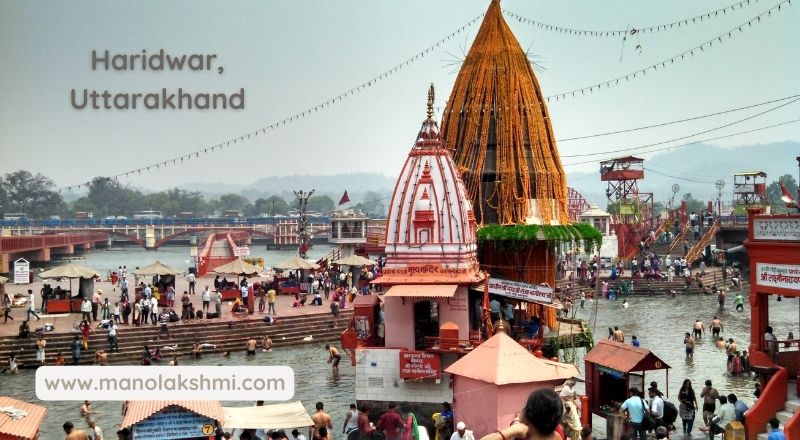
Haridwar, a holy city located in the state of Uttarakhand, India, stands as a spiritual sanctuary for millions of devotees. Situated on the banks of the holy river Ganges. Haridwar, one of Hinduism’s seven sacred cities, is considered a divine gateway and the site where Lord Vishnu initiated the universe’s creation.
Haridwar is renowned for its numerous temples and ashrams, which attract pilgrims and spiritual seekers from all corners of the globe. The city is home to the famous Har-Ki-Pauri, a sacred bathing ghat where devotees take a dip in the holy waters of the Ganges to cleanse their sins and attain spiritual liberation.
Haridwar
The Haridwar Kumbh Mela, one of the largest religious gatherings in the world, is held in Haridwar every 12 years. During the Kumbh Mela, millions of pilgrims converge in the city to participate in the sacred bathing rituals and seek the blessings of the divine. The city is adorned with vibrant decorations, and the atmosphere becomes charged with spiritual energy during this auspicious time.
Haridwar is also known for its scenic beauty and natural wonders. The city is surrounded by the majestic Himalayan ranges, which provide a breathtaking backdrop to the spiritual landscape. The Rajaji National Park, located nearby, offers a rich biodiversity and is home to a wide variety of flora and fauna.
In addition to its religious and spiritual significance, Haridwar is also a cultural hub. The city is known for its traditional arts, crafts, and music. Visitors can explore the local markets and bazaars to find unique souvenirs and handmade items. Haridwar is also home to several museums and art galleries that showcase the rich cultural heritage of the region.
Haridwar is a city that blends the sacred with the serene. It is a place where spirituality, nature, and culture converge to create a unique and unforgettable experience for visitors from all walks of life.
Rameswaram, Tamil Nadu:-India
Rameswaram, a small island town located in the southeastern corner of Tamil Nadu, India. Is a revered pilgrimage site for Hindus and a place of immense natural beauty. Known for its pristine beaches, ancient temples, and rich cultural heritage, Rameswaram attracts millions of visitors every year.
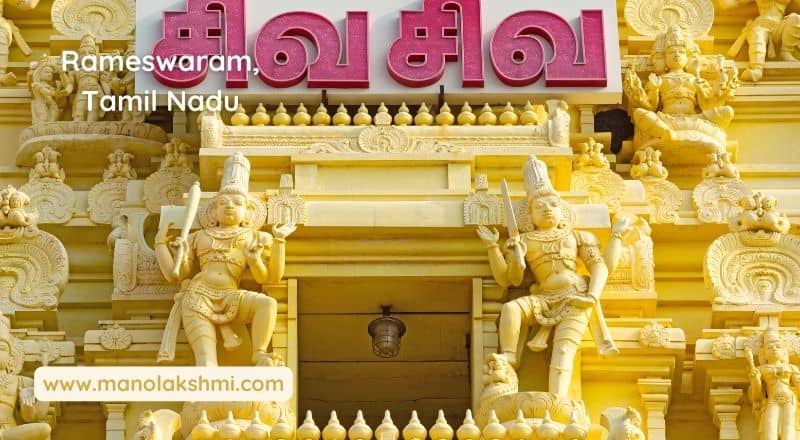
One of the main attractions of Rameswaram is the Ramanathaswamy Temple, a magnificent architectural marvel dedicated to Lord Shiva. Believed to have been built over 2,000 years ago. The temple is renowned for its intricate carvings, towering gopuras (gateway towers), and sacred tanks. Pilgrims flock to the temple to seek blessings and perform various religious rituals, making it one of the most important pilgrimage sites in India.
Rameswaram
Rameswaram, renowned for its religious significance, boasts stunning natural beauty, including pristine white-sand beaches, crystal-clear waters, and coral reefs brimming with marine life. Visitors can enjoy various water sports such as swimming, snorkeling, and scuba diving, or simply relax on the sun-kissed beaches and soak in the tranquility of the surroundings.
Rameswaram is also home to the Dhanushkodi Beach, a picturesque and historically significant site. Located at the tip of the island, Dhanushkodi was once a bustling town before it was destroyed by a cyclone in 1964. Today, the ruins of the old town, including a church, a railway station, and several houses, stand as a testament to the devastation caused by the natural disaster.
Besides its religious and natural attractions, Rameswaram has a vibrant culture and a rich history. The town is known for its traditional arts and crafts. Such as conch shell carving and the making of colorful glass bangles. Visitors can explore the local markets to find unique souvenirs and handicrafts, and learn about the traditional way of life in Rameswaram.
Overall, Rameswaram is a captivating destination that offers a harmonious blend of spirituality, natural beauty, and cultural heritage. Whether you are a pilgrim seeking divine blessings. (or) a traveler looking for a serene escape, Rameswaram has something to offer everyone.
Dwarka, Gujarat:
Dwarka, a sacred city located in the western state of Gujarat, India, holds immense religious and historical significance. This ancient city, also known as Dwaraka Puri or Jagat Mandir, has been a major pilgrimage site for Hindus worldwide for centuries.
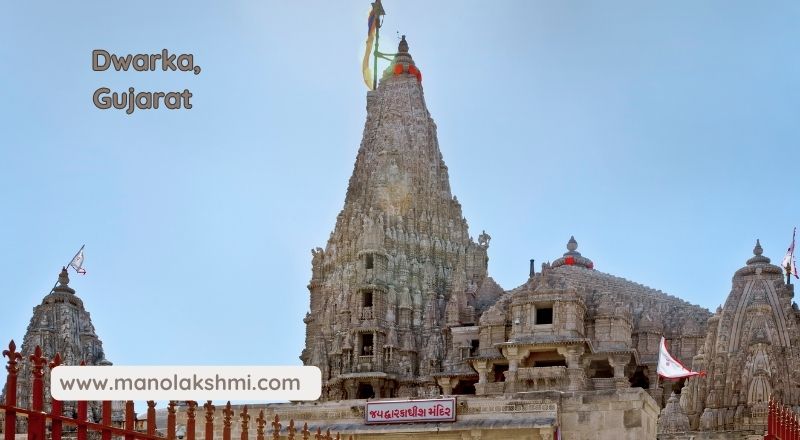
According to Hindu mythology, Dwarka was founded by Lord Krishna, the eighth incarnation of the god Vishnu. Legend has it that Krishna, along with his followers, established the city after leaving Mathura, his birthplace. Dwarka is believed to be one of the seven holy cities (Sapta Puri) and one of the four pilgrimage sites (Char Dham) in Hinduism.
The city is situated on the coast of the Arabian Sea and is adorned with numerous temples, each holding unique religious and architectural significance. The Jagat Mandir Temple, dedicated to Lord Krishna, is the most prominent temple in Dwarka. This grand temple, adorned with intricate carvings and sculptures, is considered one of the most beautiful temples in India.
Dwarka
Pilgrims from all corners of the country flock to Dwarka to seek blessings and pay homage to Lord Krishna. The city is bustling with activity during festivals, particularly during Janmashtami, the celebration of Lord Krishna’s birthday.
Dwarka not only holds religious importance but is also a rich repository of history and culture. The city has been ruled by various dynasties throughout history. Including the Yadava, the Chudasama, and the Mughals, each leaving its mark on the city’s architecture and heritage.
Besides Chudasama is spiritual significance, Dwarka is, also known for its scenic beauty. The coastline offers stunning views of the Arabian Sea, and lush green landscapes surrounded the city. Dwarka Beach, known for its pristine sands and clear waters, is a popular tourist destination.
As a symbol of devotion, cultural heritage, and natural beauty, Dwarka continues to captivate the hearts of millions of visitors each year. Whether they seek spiritual fulfillment or Simply soak in the rich history and natural splendor, Dwarka offers a profound and enriching experience for every traveler.
Puri, Odisha:
Puri is a coastal city located in Odisha and is home to the Jagannath Temple, one of the four Char Dham pilgrimage sites in India.
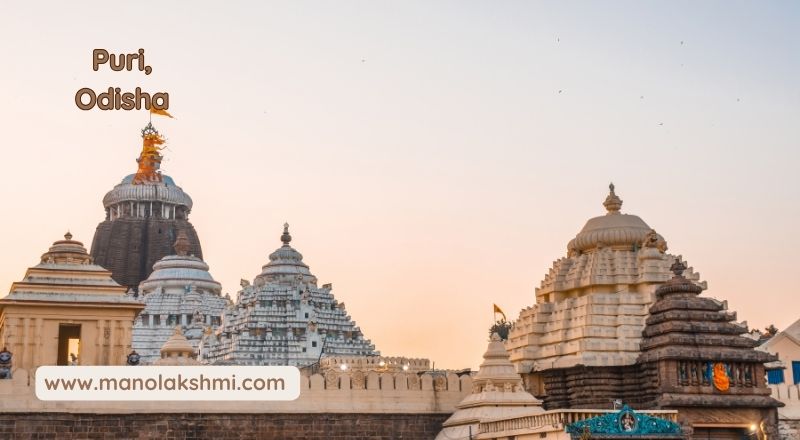
Jagannath Temple: Lord Vishnu’s Deity
Annual Rath Yatra festival.
Deities Jagannath, Balabhadra, Subhadra procession.
Massive chariots used.
Puri, a coastal city in Odisha, is a revered Hindu deity’s abode and home to the Jagannath Temple, one of India’s four sacred pilgrimage sites, known for its spiritual significance and rich cultural heritage.
The Jagannath Temple, built in the 12th century, is an architectural marvel and a major pilgrimage site.
Temple Complex Overview
Covers 400,000 square feet.
Surrounded by massive wall with four gates.
Main deity: Lord Jagannath, Balabhadra, Subhadra.
Puri
Puri is also famous for its annual Rath Yatra (Chariot Festival), which is one of the largest religious festivals in India. During the festival, the idols of Lord Jagannath, Balabhadra, and Subhadra are taken out in a grand procession on three elaborately decorated chariots. Millions of devotees from all over the world gather in Puri to witness this spectacular event.
Apart from its religious significance, Puri is also known for its beautiful beaches. Such as Puri Beach, which stretches for several kilometers along the Bay of Bengal. The beach is a popular tourist destination and offers a variety of water sports activities. Puri is also home to several other temples, including the Gundicha Temple, the Loknath Temple, and the Sun Temple at Konark, which is a UNESCO World Heritage Site.
In terms of cuisine, Puri is famous for its delicious Odia food, which is known for its use of seafood, coconut, and mustard. Some of the popular dishes include Puri’s famous prawn curry, Dalma (a lentil-based dish), and Chenna Poda (a sweet dish made from cottage cheese).
Puri is well-connected by air, rail, and road. Biju Patnaik International Airport in Bhubaneswar is the nearest airport, located approximately 60 kilometers from Puri. Puri Railway Station is the main railway station in the city, and it is connected to major cities in India. Puri is also accessible by road, with National Highway 16 connecting it to other parts of the state and the country.
Overall, Puri is a fascinating and vibrant city that offers a unique blend of spirituality, culture, and natural beauty. Whether you are a pilgrim, a history buff, or a beach lover, Puri has something to offer everyone.
Badrinath, Uttarakhand:
Badrinath is a pilgrimage town in the Garhwal Himalayas of Uttarakhand. It is one of the Char Dham pilgrimage sites and is home to the Badrinath Temple, dedicated to Lord Vishnu. The temple is situated on the banks of the Alaknanda River and is surrounded by stunning mountain scenery.
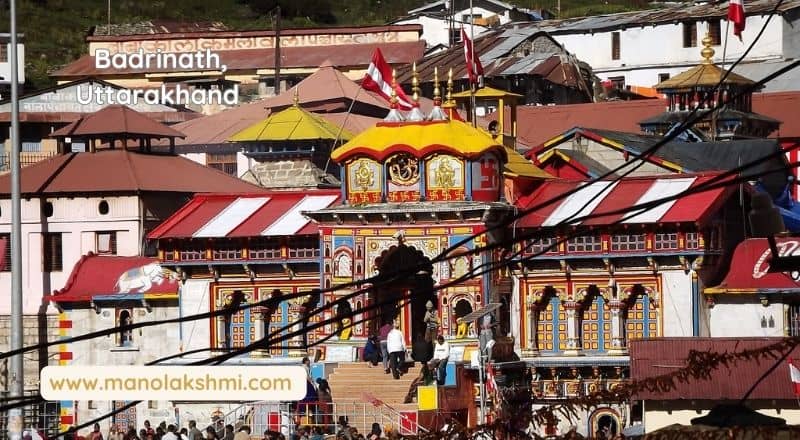
Badrinath, situated amidst the snow-capped peaks of the Himalayas in Uttarakhand, India, is a sacred pilgrimage site for Hindus. It is one of the four Char Dhams, the four most important pilgrimage sites in Hinduism. Badrinath is dedicated to Lord Vishnu, and the Badrinath Temple, believed to have been built by Adi Shankara in the 8th century, is the main attraction.
Badrinath
The temple is open for pilgrims only during the summer months, from April to November, as the region experiences heavy snowfall during the winter. The journey to Badrinath is considered a challenging one, with winding mountain roads and unpredictable weather conditions. However, the breathtaking scenery and the spiritual significance of the site make it a rewarding experience for devotees.
The town of Badrinath is small and centered on the temple. There are numerous hotels, guesthouses, and restaurants catering to the needs of pilgrims. Visitors can also explore the surrounding areas and visit nearby attractions. Such as the Vasudhara Falls, the Bhim Pul, and the Mana Village. ‘which is regarded as the final village on the Indian side prior to reaching the Tibetan border.’
The best time to visit Badrinath is during the summer months when the weather is pleasant, and the roads are open. Devotees often combine their pilgrimage to Badrinath with visits to other Char Dham sites, including Gangotri, Yamunotri, and Kedarnath. ‘The Char Dham Yatra is a revered pilgrimage that holds profound spiritual significance for Hindus.’
Besides its religious importance, Badrinath is also known for its natural beauty. Towering mountain peaks, lush forests, and cascading waterfalls surrounded the town. The Alaknanda River, which originates from the glaciers of the Himalayas, flows through the town, adding to its scenic charm.
Overall, Badrinath is a place of immense spiritual and natural significance. It attracts pilgrims from all over India and around the world, ‘who come to seek blessings and to experience the divine beauty of the Himalayas’.
Kedarnath, Uttarakhand:-India
Kedarnath is a pilgrimage town in the Garhwal Himalayas of Uttarakhand. It is one of the Char Dham pilgrimage sites and is home to the Kedarnath Temple, dedicated to Lord Shiva. The temple is situated at a height of 3,583 meters above sea level and is surrounded by snow-capped peaks.
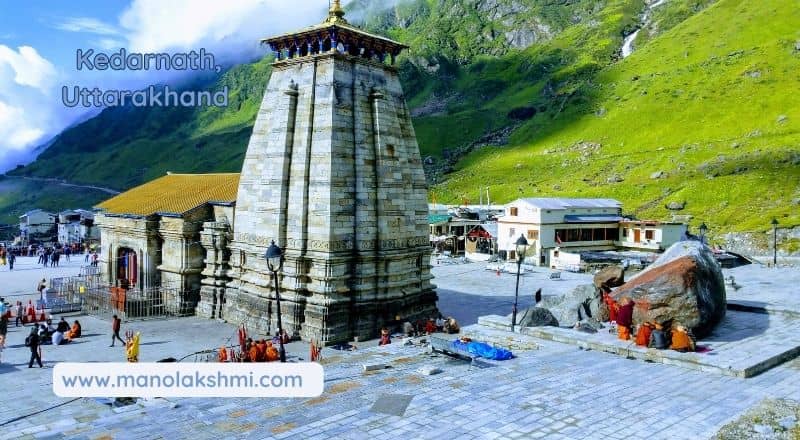
Kedarnath, a sacred town nestled in the Rudraprayag district of Uttarakhand, India, perches at an altitude of 3,583 meters (11,755 feet) above sea level along the Mandakini River’s banks.
A Kedarnath is one of the Char Dhams, the four most important Hindu pilgrimage sites.
The main attraction of the town is the Kedarnath Temple, which is dedicated to Lord Shiva. It is believed that the Pandavas, heroes of the epic Mahabharata, constructed the temple.
Snow-capped peaks surround the temple and offer breathtaking views of the Himalayas.
Kedarnath is also a popular trekking destination. The trek to Kedarnath starts from Gaurikund, which is located 14 kilometers (8.7 miles) from Kedarnath. The journey is arduous, yet it rewards with breathtaking vistas of the Himalayas.
Kedarnath is a place of great religious and natural beauty. It is a must-visit destination for pilgrims and trekkers alike.
Kedarnath
Here are some additional details about Kedarnath:
The Kedarnath Temple is one of the 12 Jyotirlingas, the most sacred Shiva temples in India.
The temple welcomes pilgrims annually from April through November.
The optimal period for visiting Kedarnath spans from May to June, which are the summer months.
Kedarnath is accessible by helicopter from Dehradun and Rishikesh.
In Kedarnath offers a variety of hotels and guesthouses for accommodation.
The town also has some restaurants and shops.
Kedarnath is a popular destination for yoga and meditation retreats.
The town is also home to many ashrams and monasteries
A Kedarnath is a place of great natural beauty, with stunning views of the Himalayas.
The town is also home to a variety of wildlife, including bears, leopards, and snow leopards.
Kedarnath is a place of great religious and natural significance, and it is a must-visit destination for pilgrims and trekkers alike.
Gangotri, Uttarakhand:
Gangotri is a pilgrimage town located in the Garhwal Himalayas of Uttarakhand. It is the source of the Ganges River and is home to the Gangotri Temple, dedicated to Goddess Ganga. The temple is situated at a height of 3,415 meters above sea level and offers stunning views of the Himalayas.
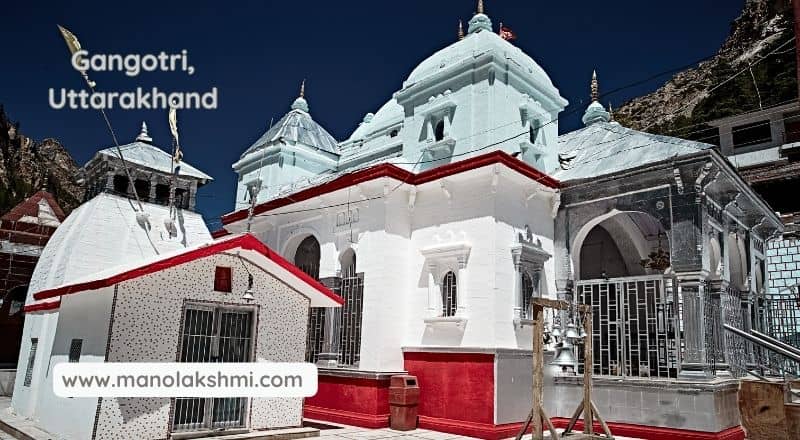
Gangotri, Uttarakhand, is a picturesque town nestled amidst the majestic Himalayas. Known for its pristine beauty and spiritual significance, Gangotri is revered as the source of the sacred river Ganga, considered the holiest river in Hinduism. The town derives its name from the confluence of the Bhagirathi and Jahnavi rivers, marking the beginning of the Ganga’s journey.
Surrounded by snow-capped peaks, Gangotri offers breathtaking views of the Himalayan landscape. The town is set at an elevation of 3,100 meters above sea level and is home to a revered temple dedicated to Goddess Ganga. The temple, built in the 18th century, is a popular pilgrimage site and attracts devotees from far and wide.
Gangotri
The beauty of Gangotri extends beyond its spiritual significance. Lush forests surround the town, cascading waterfalls, and alpine meadows. Visitors can explore the region on foot, following scenic trails that lead to hidden valleys and panoramic viewpoints. One of the most popular treks is the Gangotri-Gomukh trek, which takes hikers to the source of the Ganga at Gomukh glacier.
Gangotri is also a base camp for various treks in the Garhwal region of the Himalayas. The town provides essential supplies and accommodations for trekkers embarking on expeditions to peaks like Bhagirathi III, Shivling, and Meru. The region offers challenging routes for experienced climbers and scenic trails for those seeking a more leisurely experience.
Beyond its natural beauty and spiritual significance, Gangotri also has a rich cultural heritage. The town is home to the Gangotri National Park, which protects a diverse range of flora and fauna. The park is home to endangered species like the snow leopard, Himalayan black bear, and musk deer.
Gangotri is a place that captures the essence of the Himalayas, combining spiritual reverence with breathtaking natural beauty. It’s a destination that offers a profound experience, leaving visitors with a lasting sense of wonder and tranquility.
Yamunotri, Uttarakhand:-India
Yamunotri is a pilgrimage town located in the Garhwal Himalayas of Uttarakhand. It is the source of the Yamuna River and is home to the Yamunotri Temple, dedicated to Goddess Yamuna. The temple is situated at a height of 3,293 meters above sea level and offers panoramic views of the Himalayas.

Yamunotri, nestled in the tranquil environs of the Garhwal Himalayas in Uttarakhand, India, is a revered pilgrimage site and the source of the sacred Yamuna River. The journey to Yamunotri begins from the town of Rishikesh, where devotees embark on a 236-kilometer pilgrimage, often referred to as the “Char Dham Yatra.”
Yamunotri
As pilgrims make their way to Yamunotri, they traverse lush green valleys, picturesque villages, and encounter breathtaking views of the snow-capped peaks of the Himalayas. The trek offers a profound spiritual experience, allowing devotees to connect with the divine and seek blessings from the goddess Yamuna.
Yamunotri Temple Overview
Elevated 3,293 meters above sea level.
Built in 19th century.
Dedicated to goddess Yamuna, daughter of Sun God Surya.
Devotees offer prayers and seek blessings from the goddess, seeking spiritual guidance and prosperity.
The main attraction of Yamunotri is the holy thermal springs known as “Surya Kund” and “Gauri Kund.” Pilgrims take a purifying dip in the warm waters of these springs, believing that it washes away their sins and bestows good health. The water from the springs is considered sacred and is collected by devotees in bottles to be taken home as a symbol of divine blessings.
The surrounding area of Yamunotri is home to picturesque landscapes. Pilgrims can embark on short treks to nearby attractions, such as the Janki Chatti, a hot water spring, and the Divya Shila, a sacred rock formation. The region is also known for its lush flora and fauna, including a variety of wildflowers and medicinal plants.
Yamunotri holds immense spiritual significance for Hindus and is a must-visit destination for pilgrims seeking inner peace and divine blessings. The journey to Yamunotri is a transformative experience that offers a glimpse into the rich cultural traditions and the natural beauty of the Garhwal Himalayas.
Click here: India Travel Guide: The Best Indian Spiritual Places to Visit
Shirdi, Maharashtra:-India
Shirdi is a town located in the Ahmednagar district of Maharashtra. It is home to the Saibaba Temple, dedicated to the revered saint Sai Baba of Shirdi. Shirdi is a major pilgrimage site for devotees of Sai Baba and attracts millions of visitors every year.
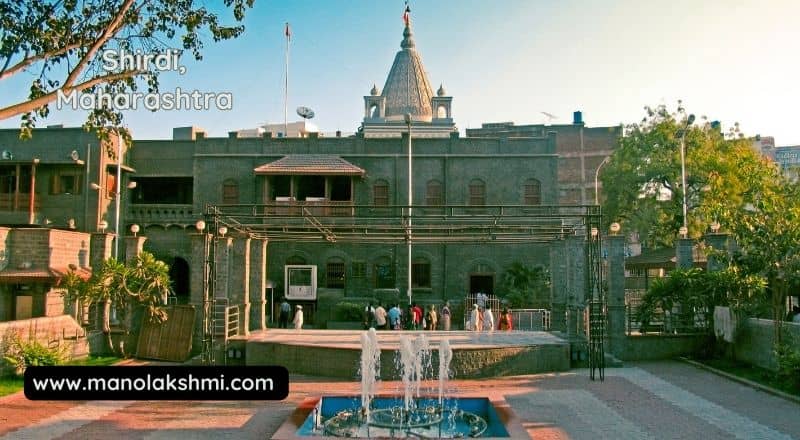 Shirdi, Maharashtra, A town located in the Ahmednagar district, holds a significant place in the religious and spiritual landscape of India. It is renowned as the abode of the revered saint, Sai Baba of Shirdi, who lived and preached his teachings during the late 19th and early 20th centuries.
Shirdi, Maharashtra, A town located in the Ahmednagar district, holds a significant place in the religious and spiritual landscape of India. It is renowned as the abode of the revered saint, Sai Baba of Shirdi, who lived and preached his teachings during the late 19th and early 20th centuries.
Shirdi has become a major pilgrimage center, attracting millions of devotees from across the globe. The sacred Samadhi Mandir, where Sai Baba’s mortal remains are enshrined, is the Heart of Shirdi. Devotees flock to the temple to seek blessings, offer prayers, and pay homage to the saint.
Shirdi
Sai Baba’s teachings emphasized love, compassion, and the unity of all religions. He preached the message of “Sabka Malik Ek” (One God for All), promoting harmony and understanding among people from different backgrounds. His teachings have left an enduring legacy, inspiring countless individuals worldwide.
Besides its religious significance, Shirdi boasts several other attractions that draw tourists and pilgrims alike. The Khandoba Temple, dedicated to Lord Khandoba, is an ancient shrine with intricate carvings and sculptures. The Gurus than, where Sai Baba first appeared in Shirdi, is another important pilgrimage site.
Shirdi is also home to the Sai Baba Sansthan Trust, which manages the various temples and facilities associated with the saint. The trust undertakes numerous social welfare initiatives, including healthcare, education, and community development projects.
The town of Shirdi has undergone significant development in recent years, accommodating the growing number of pilgrims and promoting sustainable tourism practices. It offers a range of accommodation options, from budget-friendly lodges to luxurious hotels, catering to the diverse needs of visitors.
A visit to Shirdi is a transformative experience for many devotees, offering a glimpse into the life and teachings of Sai Baba. The town’s serene atmosphere, coupled with its rich spiritual heritage, makes it a place of solace and spiritual rejuvenation.
